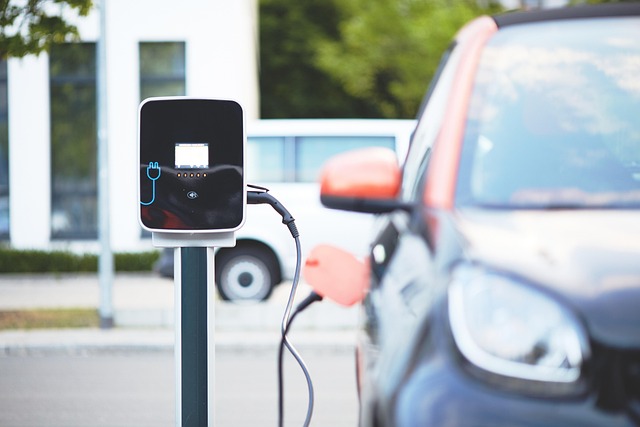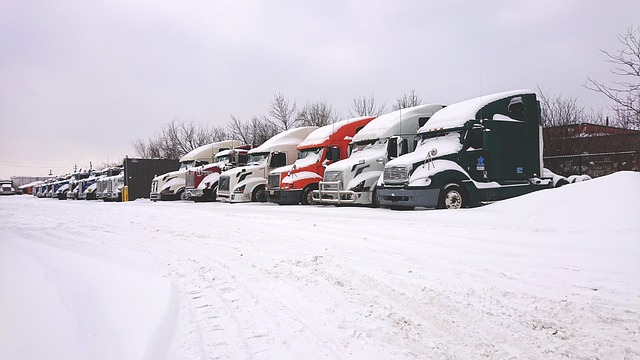Looking to register your car in California? This comprehensive guide walks you through the entire process, from understanding key requirements to securing your license plate. First, grasp the essential car registration rules in California. Next, gather vital documents for a seamless VIN (Vehicle Identification Number) verification process. After passing the check, choose between online registration or a visit to the DMV. Finally, pay fees and receive your plates, transforming your vehicle into a legal California roadster.
- Understand California Car Registration Requirements
- Gather Necessary Documents for VIN Verification
- Perform Vehicle Identification Number (VIN) Check
- Complete Online Registration or Visit DMV Office
- Pay Registration Fees and Receive License Plate
Understand California Car Registration Requirements

Before registering your car in California, it’s crucial to understand the state’s requirements for vehicle identification number (VIN) verification. The process involves ensuring that your vehicle meets all safety and pollution standards set by the California Department of Motor Vehicles (DMV). One essential step is having a valid, accurate VIN, which serves as a unique identifier for your car. This information is crucial for tracking vehicle history, ownership changes, and ensuring compliance with local laws.
Additionally, consider the option of a mobile VIN verification or inspection to streamline the process. These services allow you to get your car’s VIN checked remotely, offering convenience and saving time. A mobile vin inspection can help clear any doubts about your vehicle’s eligibility for registration, making it easier to complete the registration process with the California DMV.
Gather Necessary Documents for VIN Verification

Before heading to the California Department of Motor Vehicles (DMV), ensure you gather all the essential documents for a smooth vin verification process. The Vehicle Identification Number (VIN) is a unique code that identifies your car, and having accurate information is crucial for registration. You’ll need the vehicle’s title, which proves ownership, and valid identification like a driver’s license or passport. Additionally, a current registration from another state or a mobile vin verifier app can expedite the process, as it provides instant access to your car’s history.
For a vin inspection, have all these documents ready and be prepared to answer questions about any modifications made to your vehicle. Proper documentation ensures that your car’s registration goes without a hitch, so take the time to gather everything needed for a successful VIN verification.
Perform Vehicle Identification Number (VIN) Check

Before registering your car in California, it’s crucial to perform a Vehicle Identification Number (VIN) check. This step ensures that the vehicle is as described and has no outstanding issues or hidden history. A VIN verification involves cross-referencing the unique 17-character code with state and federal databases to confirm its authenticity and safety standards compliance. In California, this process can be completed through various methods, including a mobile vin inspection service, where a professional comes to your location to conduct the check using specialized equipment.
A reliable way to ensure a smooth registration process is by employing a mobile vin verifier. These services offer convenience, saving you time and effort compared to traditional methods. They provide accurate and up-to-date information about the vehicle’s history, including any accidents, outstanding loans, or recalls, which are essential factors in determining the car’s condition and value. By completing a VIN verification, you gain peace of mind and a clearer understanding of your car’s background before proceeding with registration.
Complete Online Registration or Visit DMV Office

You have two options for registering your car in California: complete the process online or visit a DMV office. Both methods require gathering essential documents and verifying your vehicle’s VIN (Vehicle Identification Number). For added convenience, consider utilizing a mobile vin inspection service to have your VIN verified on-site by a professional using advanced technology. This can streamline the initial steps of registration, ensuring accuracy and saving you time.
If opting for an online registration, ensure your vehicle meets California’s requirements. You’ll need to input your VIN during the process, which triggers a mobile vin verifier or mobile vin verification tool to check its history, including any recalls or reported issues. Once your documents are verified and all fees paid, you can finalize the registration at a DMV office or by mail.
Pay Registration Fees and Receive License Plate

After completing the registration process and providing all necessary documentation, it’s time to pay your registration fees. These fees vary based on several factors such as the type of vehicle, its age, and whether you’re renewing or registering for the first time. You can typically pay these fees online or in person at a California Department of Motor Vehicles (DMV) office. Once your payment is processed, you will receive your license plates.
California requires that vehicles have valid license plates to operate legally on public roads. These plates are assigned based on the vehicle identification number (VIN), which should be verified during the registration process. For convenience, many drivers opt for a mobile vin verifier or conduct a mobile vin inspection to ensure their VIN is accurate before proceeding with registration. This step guarantees that your plates match the specific vehicle you own.
Registering a car in California is a straightforward process that involves understanding key requirements, gathering essential documents for VIN verification, performing a vehicle identification number (VIN) check, completing online registration or visiting a DMV office, paying relevant fees, and receiving your license plate. By adhering to these steps and ensuring accurate VIN verification, you can efficiently navigate the car registration process in California.
